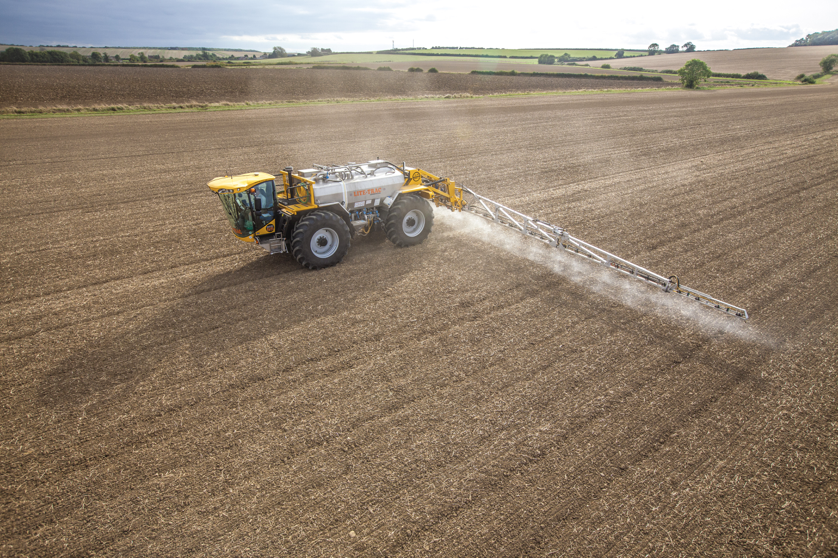Making the most of your pre-emergence herbicide applications is critical not just to effective grassweed control but also to achieve early vigour of the crop according to Nichino’s Commercial Technical Manager and Agronomist, Ollie Johnson.
“Even small populations of blackgrass and ryegrass emerging alongside a cereal crop can reduce tiller numbers and compete for valuable early nutrition,” he says. “And at around £100/ha, the pre-emergence mix is also among the most expensive applications you’ll make all season so it makes good financial sense to ensure that you’re getting the most ‘bang’ for your buck – that’s where BackRow Max comes in.”

Based upon paraffinic oils (as opposed to methylated seed oils found in other residual partners), BackRow Max delivers superior persistency and improved herbicide performance for several weeks after application which is the key to success when it comes to residual herbicides.
Ollie explains that BackRow Max holds the herbicide in the upper portion of the soil for longer. This keeps it within the germination zone of competitive and challenging weeds such as ryegrass and blackgrass whilst holding it above the deeper zone where the crop is rooting. The combined effect of this upper concentration and crop safening action helps prevent crop thinning, improves crop vigour and reduces the number of weeds to be dealt with later.
As growers, there’s nothing more frustrating than applying an expensive herbicide stack or mix to help reduce grass weed burden for the purpose of allowing the crop to grow and tiller freely only to find that the herbicide itself has bleached or damaged the crop – both of which will reduce the crop’s vigour. The result being slower initial growth and reduced tiller numbers, the exact opposite to what we were trying to achieve by applying the herbicide in the first place!
Ollie says: “It’s critical to achieve a minimum population reduction of blackgrass of 97% over the season just to stop the population from increasing. This is because each plant can produce up to 6,000 seeds resulting in millions of plants per hectare”.

The addition of BackRow Max allows robust mixes to be applied with less risk to the crop since the herbicide is held in the upper portion of the soil and away from developing seedling roots.
He adds: “Chemical leaching is a real concern, not only due to loss of the herbicide from the activity zone but also its entry into groundwater and environmental safety. In trials in the Netherlands, where water safety is paramount, we’ve seen >60% reduction in herbicide leaching through the addition of BackRow Max when compared to pre-ems applied alone”.
With the recent news of confirmed resistance to glyphosate in the UK in Ryegrass populations and as the challenge of controlling grassweeds intensifies, so does the herbicide strength and the dose required to do so. With stronger mixes comes increased risk of crop injury and with heavier, more frequent rain showers that we’ve seen in recent autumns, the risk of crop injury increases further. By adding BackRow Max to your spray mix, you remove some of this risk, giving peace of mind that your herbicide investment is controlling weeds and not damaging your crop or your environment.
In trials, BackRow Max has been shown to reduce crop thinning from 10% plants lost in a shallow drilled situation to zero plants lost where BackRow Max was included.
Ollie explains: “Where the land has been cultivated as opposed to direct drilled, the risk of crop injury increases due to the looser soil and quicker infiltration of rainwater and herbicide to depth. In situations like these, where the crop may have been drilled shallower than intended, it’s not uncommon to see 20% seedling loss but with BackRow Max, we’ve again seen this thinning reduced to zero.”
“In oilseed rape, we know from AHDB work that a vigorous, rapidly growing crop is a key driver in terms of surviving flea beetle and slug pressure demonstrating why the highest yielding varieties are the more vigorous hybrids. It’s clear that vigour and yield are intrinsically linked so herbicide damage and bleaching through pre-ems like clomazone (Centium) to a shallow drilled crop such as OSR should be avoided. By adding BackRow Max and keeping the herbicide away from the crop’s developing seed and roots, this helps retain the crop’s valuable vigour trait and prevents yield loss through herbicide phytotoxicity.”








